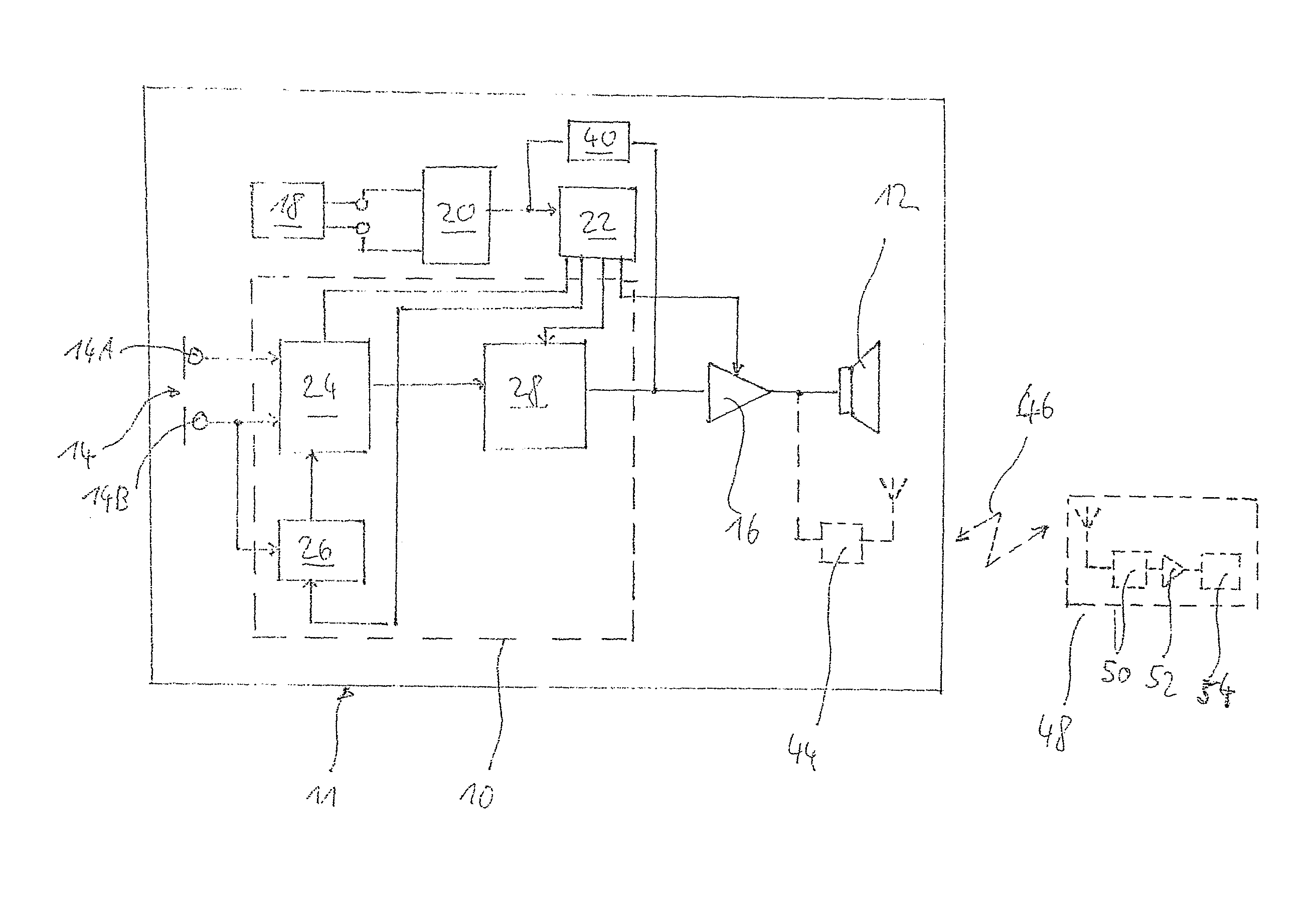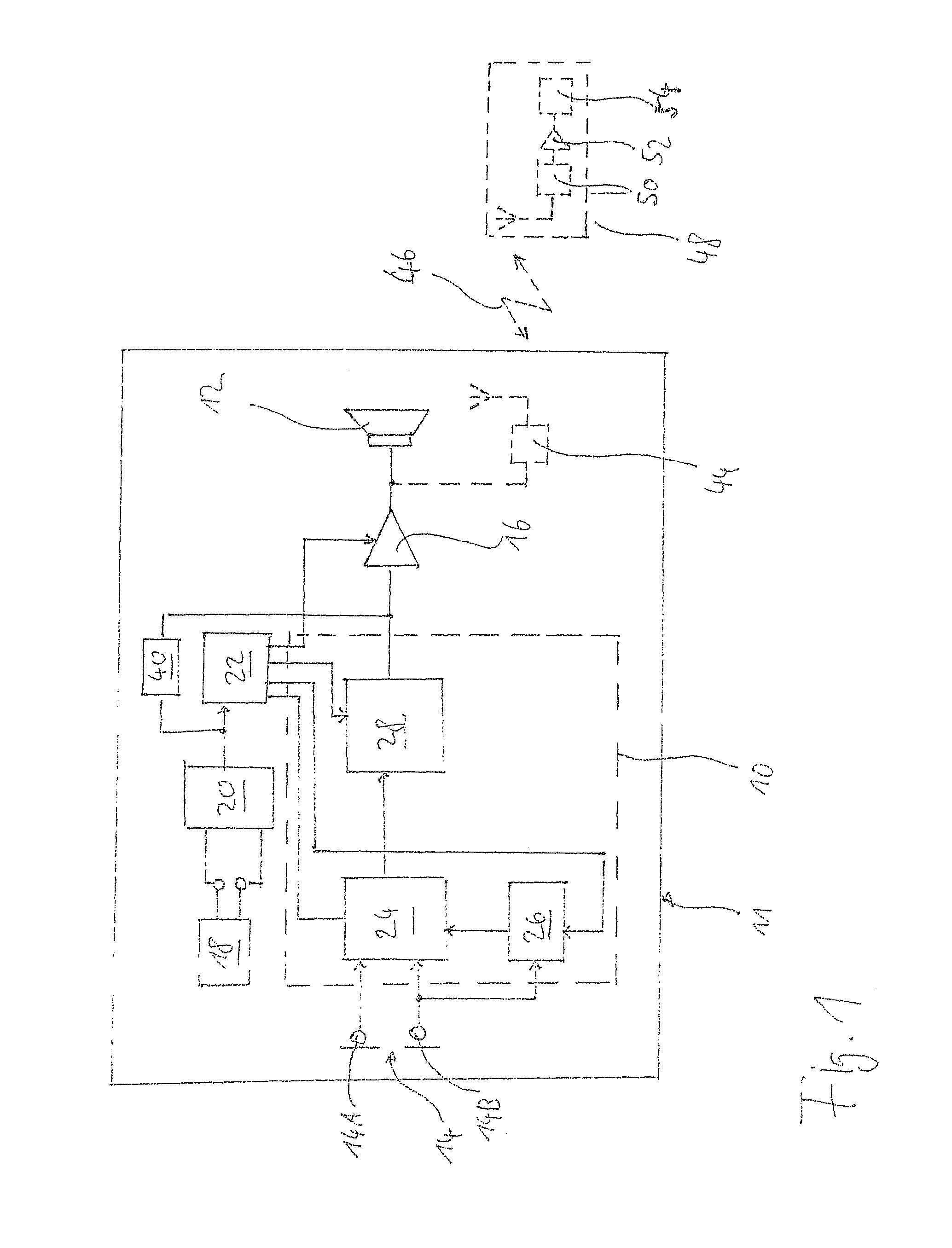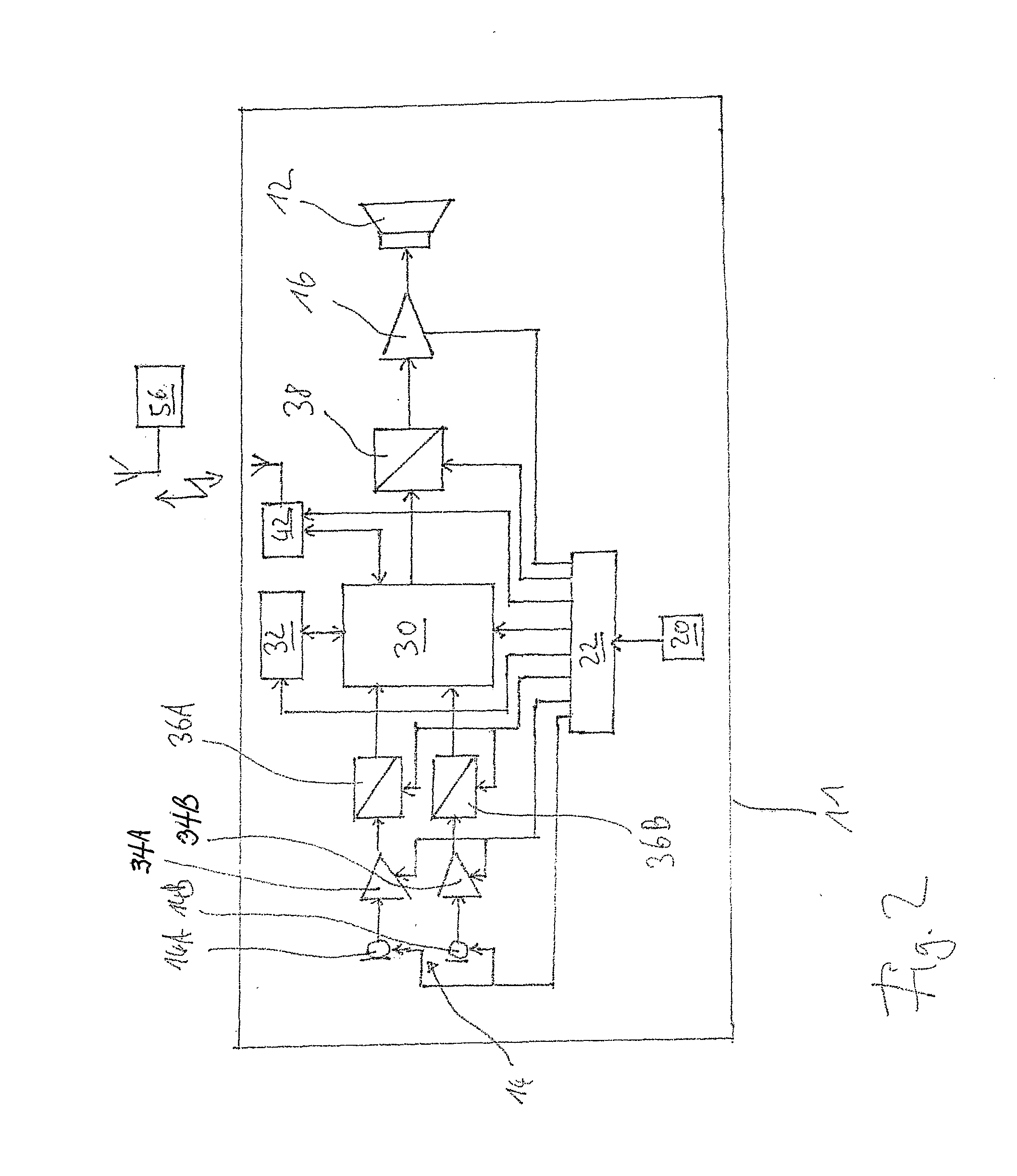Hearing instrument and method of operating the same
a hearing instrument and hearing technology, applied in the field of hearing instruments and methods of operation, can solve the problems of hearing aids not working, battery power outage, more or less deaf, etc., and achieve the effects of reducing power consumption, low battery status, and prolonging battery li
- Summary
- Abstract
- Description
- Claims
- Application Information
AI Technical Summary
Benefits of technology
Problems solved by technology
Method used
Image
Examples
Embodiment Construction
[0019]FIG. 1 relates to an example of a hearing instrument 11 to be worn at least partly in the ear of a user comprising a digital audio signal processing unit 10 and an electro-acoustic output transducer (speaker / receiver) 12, a microphone arrangement 14 for capturing audio signals from ambient sound, a power amplifier 16, a battery 18, a battery monitoring unit 20 and an audio signal processing mode selection unit 22. The audio signals captured by the microphone arrangement 14 are processed in the audio signal processing unit 10, the processed audio signals are amplified in the power amplifier 16, and the amplified processed audio signals are converted into sound by the electro-acoustic output transducer 12.
[0020]Typically, the audio signal processing unit 10 comprises an acoustic beamformer unit 24, an auditory scene classifier unit 26 and a unit 28 which processes the audio signals provided by the microphone arrangement 14 or the beamformer 24 by applying a frequency and level d...
PUM
 Login to View More
Login to View More Abstract
Description
Claims
Application Information
 Login to View More
Login to View More - R&D
- Intellectual Property
- Life Sciences
- Materials
- Tech Scout
- Unparalleled Data Quality
- Higher Quality Content
- 60% Fewer Hallucinations
Browse by: Latest US Patents, China's latest patents, Technical Efficacy Thesaurus, Application Domain, Technology Topic, Popular Technical Reports.
© 2025 PatSnap. All rights reserved.Legal|Privacy policy|Modern Slavery Act Transparency Statement|Sitemap|About US| Contact US: help@patsnap.com



